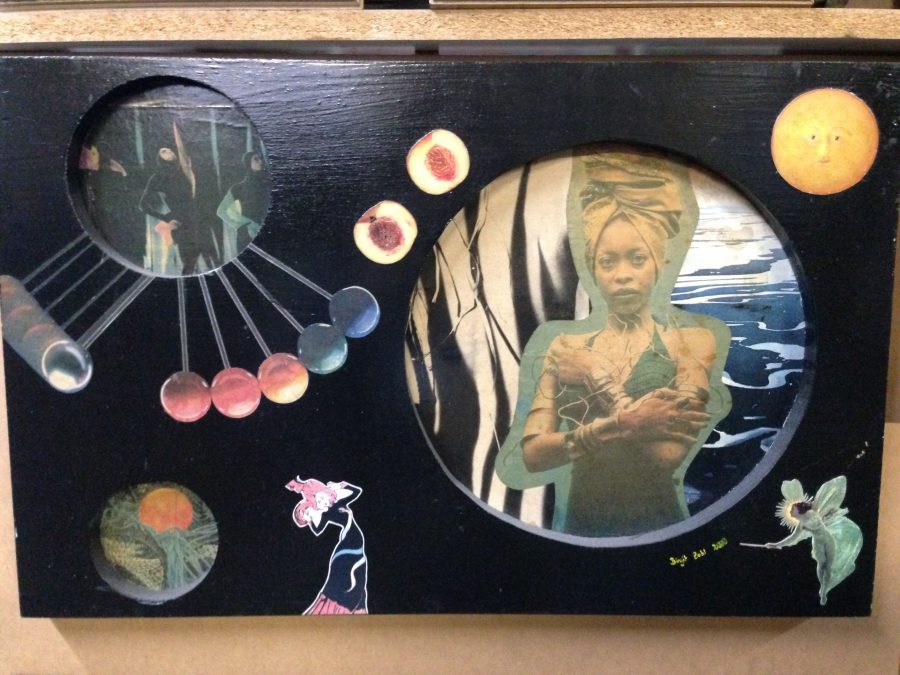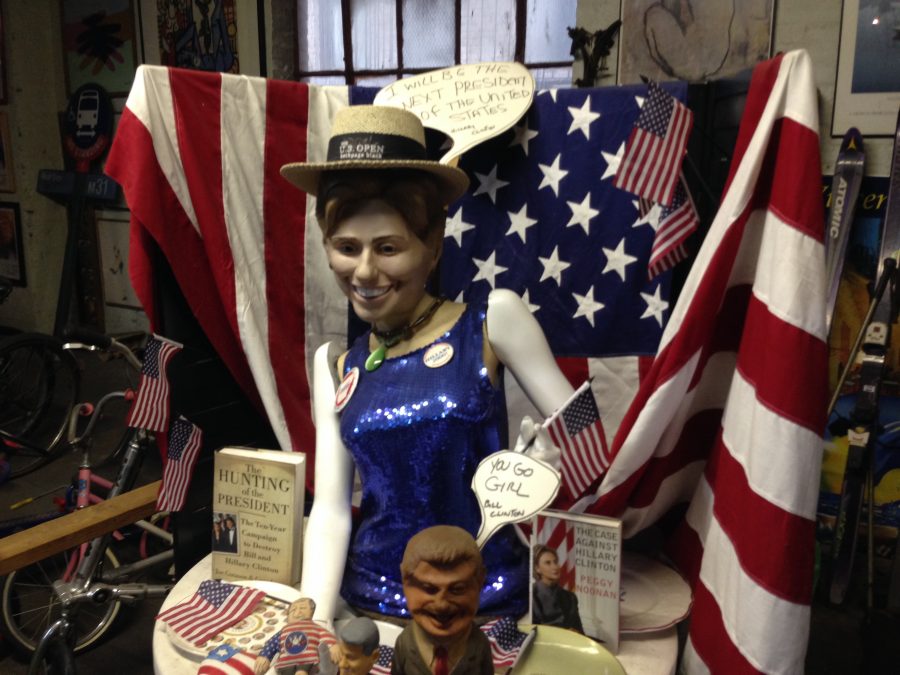[Most Recent Entries] [Calendar View]
Monday, October 14th, 2019
| Time | Event |
| 8:00a | H.G. Wells’ The War of the Worlds Becomes a New BBC Miniseries Set in Edwardian England H.G. Wells began writing the novel that would become The War of the Worlds in the England of the mid-1890s. As a setting for this tale of invasion from outer space, he chose the place he knew best: England of the mid-1890s. Staging spectacles of unfathomable malice and fantastical destruction against such an ordinary backdrop made The War of the Worlds, first as a magazine serial and then as a standalone book, a chillingly compelling experience for its readers. Orson Welles understood the effectiveness of that choice, as evidenced by the fact that in his famously convincing 1938 radio adaptation of Wells' novel, the hostile aliens land in modern-day New Jersey. Subsequent adaptations have followed the same principle: in 1953, the first War of the Worlds Hollywood film set the action in 1950s Los Angeles; the latest, a Steven Spielberg-directed Tom Cruise vehicle that came out in 2005, set it in the New York and Boston of the 2000s. But now, set to premiere later this year on BBC One, we have a three-part miniseries that returns the story to the place and time in which Wells originally envisioned it — or rather, the place and very nearly the time. Shot in Liverpool, the production recreates not the Victorian England in which The War of the Worlds was first published but the brief Edwardian period, lasting roughly the first decade of the 20th century, that followed it. In a way, a period War of the Worlds reflects our time as clearly as the previous War of the Worlds adaptations reflect theirs: television viewers of the 2010s have shown a surprisingly hearty appetite for historical drama, and often British historical drama at that. Think of the success earlier this decade of Downton Abbey, whose upstairs-downstairs dynamics proved gripping even for those not steeped in the British class system. This latest War of the Worlds, whose trailer you can watch at the top of the post, uses similar themes, telling the story of a man and woman who dare to be together despite their class differences — and, of course, amid an alien invasion that threatens to destroy the Earth. It remains to be seen whether the miniseries will rise to the central challenge of adapting The War of the Worlds: will the emotions at the center of the story be as convincing as the mayhem surrounding them? Related Content: Hear Orson Welles’ Iconic War of the Worlds Broadcast (1938) Ray Harryhausen’s Creepy War of the Worlds Sketches and Stop-Motion Test Footage Edward Gorey Illustrates H.G. Wells’ The War of the Worlds in His Inimitable Gothic Style (1960) Based in Seoul, Colin Marshall writes and broadcasts on cities, language, and culture. His projects include the book The Stateless City: a Walk through 21st-Century Los Angeles and the video series The City in Cinema. Follow him on Twitter at @colinmarshall or on Facebook. H.G. Wells’ The War of the Worlds Becomes a New BBC Miniseries Set in Edwardian England is a post from: Open Culture. Follow us on Facebook, Twitter, and Google Plus, or get our Daily Email. And don't miss our big collections of Free Online Courses, Free Online Movies, Free eBooks, Free Audio Books, Free Foreign Language Lessons, and MOOCs. |
| 11:02a | William Burroughs Meets Francis Bacon: See Never-Broadcast Footage (1982) The writing of William S. Burroughs and the paintings of Francis Bacon take us into often troubling but nevertheless compelling realities we couldn't possibly glimpse any other way. Some of that effect has to do with the inimitable (if often unsuccessfully imitated) styles they developed for themselves, and some with what was going on in their unusual lives as well as the even wilder realms of their minds. And though no scholars have yet turned up a Burroughs monograph on Bacon's art, or Bacon-painted illustrations for a Burroughs novel — just imagine Naked Lunch given that treatment — those minds did meet now and again in life, starting in Morocco six decades ago. "The two men first met in Tangiers in the 1950s when Burroughs was technically on the run for murdering his wife after a 'shooting accident' during a drunken game of William Tell," writes Dangerous Minds' Paul Gallagher. "Bacon was then in a brutal and near fatal relationship with a violent sadist called Peter Lacey who used to beat him with a leather studded belt." None other than Allen Ginsberg made the introduction between the two men, "as he thought Bacon painted the way Burroughs wrote." But Burroughs saw more differences than similarities: "Bacon and I are at opposite ends of the spectrum," he once said. "He likes middle-aged truck drivers and I like young boys. He sneers at immortality and I think it’s the one thing of importance. Of course we’re associated because of our morbid subject matter." Bacon and Burroughs reminisce about their first meeting — what they can remember of it, anyway — in an encounter filmed by the BBC for a 1982 documentary on the writer. "Arena followed him to the home and studio of old friend Francis Bacon, where he drops in for a cup of tea and a catch up," says the BBC's site. "This meeting has never been broadcast." But you can see their conversation presented in a ten-minute edit in the video above. Gallagher notes that the camera-shy Burroughs gets into the spirit of things only when the talk turns to his favorite subjects at the time: "Jajouka" — a Moroccan village with a distinct musical tradition — "Mayans, and immortality." Bacon, "waspish, bitchy, gleeful like a naughty schoolboy," throws out barbs left and right about his fellow artists and Burroughs' fellow writers. Bacon also recalls his and Burroughs' "mutual friendship with Jane and Paul Bowles," the famously bohemian married couple known for their writing as well as their expat life in Morocco, "going on to discuss Jane Bowles’ mental decline and the tragedy of her last years being tended to by nuns, a situation which Bacon thought ghastly. Ironically, Bacon died just over a decade later being tended to by nuns after becoming ill in Spain (an asthma attack)." Even the most knowledgable fans of Burroughs, Bacon, and all the illustrious figures in their worldwide circles surely don't know the half of what happened when they got together. And though this ten-minute chat adds little concrete information to the record, it still gets us imagining what all these artistic associations might have been like — firing up our imaginations being the strong suit of creators like Bacon and Burroughs, even decades after they've left us to our own reality. via Dangerous Minds Related Content: The Visual Art of William S. Burroughs: Book Covers, Portraits, Collage, Shotgun Art & More Gun Nut William S. Burroughs & Gonzo Illustrator Ralph Steadman Make Polaroid Portraits Together When William S. Burroughs Appeared on Saturday Night Live: His First TV Appearance (1981) The Discipline of D.E.: Gus Van Sant Adapts a Story by William S. Burroughs (1978) Who Was Joan Vollmer, the Wife William Burroughs Allegedly Shot While Playing William Tell? Based in Seoul, Colin Marshall writes and broadcasts on cities, language, and culture. His projects include the book The Stateless City: a Walk through 21st-Century Los Angeles and the video series The City in Cinema. Follow him on Twitter at @colinmarshall or on Facebook. William Burroughs Meets Francis Bacon: See Never-Broadcast Footage (1982) is a post from: Open Culture. Follow us on Facebook, Twitter, and Google Plus, or get our Daily Email. And don't miss our big collections of Free Online Courses, Free Online Movies, Free eBooks, Free Audio Books, Free Foreign Language Lessons, and MOOCs. |
| 2:00p | Treasures in the Trash: A Secret Museum Inside a Working New York City Department of Sanitation Garage
Like many New Yorkers, retired sanitation worker Nelson Molina has a keen interest in his fellow citizens' discards. But whereas others risk bedbugs for the occasional curbside score or dumpster dive as an enviro-political act, Molina’s interest is couched in the curatorial. The bulk of his collection was amassed between 1981 and 2015, while he was on active duty in Carnegie Hill and East Harlem, collecting garbage in an area bordered by 96th Street, Fifth Avenue, 106th Street, and First Avenue.
At the end of every shift, he stashed the day’s finds at the garage. With the support of his coworkers and higher ups, his hobby crept beyond the confines of his personal area, filling the locker room, and eventually expanding across the massive second floor of Manhattan East Sanitation Garage Number 11, at which point it was declared an unofficial museum with the unconventional name of Treasures in the Trash. Because the museum is situated inside a working garage, visitors can only access the collection during infrequent, specially arranged tours. Hunter College’s East Harlem gallery and the City Reliquary have hosted traveling exhibits.
The Foundation for New York’s Strongest (a nickname originally conferred on the Department of Sanitation's football team) is raising funds for an offsite museum to showcase Molina’s 45,000+ treasures, along with exhibits dedicated to “DSNY’s rich history.” Molina’s former coworkers marvel at his unerring instinct for knowing when an undistinguished-looking bag of refuse contains an object worth saving, from autographed baseballs and books to keepsakes of a deeply personal nature, like photo albums, engraved watches, and wedding samplers.
There’s also a fair amount of seemingly disposable junk—obsolete consumer technology, fast food toys, and “collectibles” that in retrospect were mere fad. Molina displays them en masse, their sheer numbers becoming a source of wonder. That’s a lot of Pez dispensers, Tamagotchis, and plastic Furbees that could be cluttering up a landfill (or Ebay). Some of the items Molina singles out for show and tell in Nicolas Heller’s documentary short, at the top, seem like they could have considerable resell value. One man’s trash, you know...
But city sanitation workers are prohibited from taking their finds home, which may explain why Department of Sanitation employees (and Molina’s wife) have embraced the museum so enthusiastically. Even though Molina retired after raising his six kids, he continues to preside over the museum, reviewing treasures that other sanitation workers have salvaged for his approval, and deciding which merit inclusion in the collection.
Preservation is in his blood, having been raised to repair rather than discard, a practice he used to put into play at Christmas, when he would present his siblings with toys he’d rescued and resurrected. This thrifty ethos accounts for a large part of the pleasure he takes in his collection. As to why or how his more sentimental or historically significant artifacts wound up bagged for curbside pickup, he leaves the speculation to visitors of a more narrative bent.
Sign up for updates or make a donation to the Foundation for New York’s Strongest’s campaign to rehouse the collection in an open-to-the-public space here. To inquire about the possibility of upcoming tours, email the NYC Department of Sanitation at tours@dsny.nyc.gov. Photos of Treasures in the Trash by Ayun Halliday, © 2018 Related Content: Ayun Halliday is an author, illustrator, theater maker and Chief Primatologist of the East Village Inky zine. Although she lives and works inside Nelson Molina’s former pick up zone, she has yet to see any of her discards on display. Join her in NYC on Monday, October 7 when her monthly book-based variety show, Necromancers of the Public Domain celebrates the art of Aubrey Beardsley. Follow her @AyunHalliday. Treasures in the Trash: A Secret Museum Inside a Working New York City Department of Sanitation Garage is a post from: Open Culture. Follow us on Facebook, Twitter, and Google Plus, or get our Daily Email. And don't miss our big collections of Free Online Courses, Free Online Movies, Free eBooks, Free Audio Books, Free Foreign Language Lessons, and MOOCs. |
| 4:06p | Why Should We Read Dante’s Divine Comedy? An Animated Video Makes the Case Dante Alighieri’s 14th-century Divine Comedy is revered for the force of its imagery, its innovative terza rima and bold use of the vernacular, its creative interpretation of medieval Catholic doctrine, its ferocious political satire... And the poignant autobiography the poet weaves throughout the story. The epic is animated by Dante's own romantic longing and his bitter disillusionment with life. He paints himself in the first stanza as overcome by middle-aged bewilderment. Robert Durling’s translation renders the first lines thus:
He is already adrift when Virgil turns up to guide him to the famously inscribed gates of hell—“Abandon all hope ye who enter here.” [Error: Irreparable invalid markup ('<div [...] http://cdn8.openculture.com/>') in entry. Owner must fix manually. Raw contents below.] <div class="oc-video-wrapper">
<div class="oc-video-container">
<p><a href="http://feedproxy.google.com/~r/OpenCulture/~3/LOyu7nhr1-k/http//www.youtube.com/watch?v=YbCEWSip9pQ"><img src="http://img.youtube.com/vi/YbCEWSip9pQ/default.jpg" border="0" width="320" /></a></p>
</div>
<p> <!-- /oc-video-embed -->
</p></div>
<p><!-- /oc-video-wrapper --></p>
<p>Dante Alighieri’s 14th-century <a href="https://www.amazon.com/gp/product/0199794049/ref=as_li_qf_sp_asin_il_tl?ie=UTF8&tag=openculture-20&camp=1789&creative=9325&linkCode=as2&creativeASIN=0199794049&linkId=df994a0a9419f60371fec8bdaeb834bd"><em>Divine Comedy</em></a> is revered for the force of its imagery, its innovative <em>terza rima</em> and bold use of the vernacular, its creative interpretation of medieval Catholic doctrine, its ferocious political satire...</p>
<p>And the poignant autobiography the poet weaves throughout the story. The epic is animated by Dante's own romantic longing and his bitter disillusionment with life. He paints himself in the first stanza as overcome by middle-aged bewilderment. Robert Durling’s translation renders the first lines thus:</p>
<blockquote><p><em>In the middle of the journey of our life, I came to</em><br/><em>myself in a dark wood, for the straight way was lost.</em></p></blockquote>
<p>He is already adrift when Virgil turns up to guide him to the famously inscribed gates of hell—“Abandon all hope ye who enter here.”</p>
<div class="oc-center-da" http://cdn8.openculture.com/="http://cdn8.openculture.com/">
<p>The grim descent “sets into motion what is perhaps the greatest love story ever told,” says the TED-Ed video above, scripted by Sheila Marie Orfano and animated by Tomás Pichardo-Espaillat. Dante takes this epic journey with two muses, Virgil, then Beatrice, who guides him through Paradise, a figure drawn from an <a href="https://www.florenceinferno.com/beatrice-portinari/">unrequited obsession the poet harbored</a> for a woman named Beatrice Portinari.</p>
<p>Dante turned his crush into a muse, and transformed desire into chaste religious allegory. He turned his hatred of church and state corruption, however, into gleeful revenge fantasy, torturing a number of people still very much alive at the time of his writing. A member of the White Guelphs, a Florentine faction that pushed back against Roman influence, Dante fought fiercely opposed the Black Guelphs, a group loyal to the Pope. He was eventually exiled from Florence, but not silenced.</p>
<p>“Dishonored and with little hope of return,” he “freely aired his grievances” in the <a href="https://www.amazon.com/gp/product/0199794049/ref=as_li_qf_sp_asin_il_tl?ie=UTF8&tag=openculture-20&camp=1789&creative=9325&linkCode=as2&creativeASIN=0199794049&linkId=df994a0a9419f60371fec8bdaeb834bd"><em>Divine Comedy</em></a>, writing in Italian, rather than Latin, to ensure “the widest possible audience.” His readers at the time would have picked up on the references. Now, we need hundreds of notes to explain the full context. We should also know some salient facts about the poet: a life of political battle and religious devotion, an imaginative literary love affair with a woman he supposedly met twice; a thwarted desire for justice and vengeance and an obsession with integrity.</p>
<p>We do not need extensive notes and critical essays to feel the force of Dante’s language, just as we do not need to believe in the <a href="https://www.amazon.com/gp/product/0199794049/ref=as_li_qf_sp_asin_il_tl?ie=UTF8&tag=openculture-20&camp=1789&creative=9325&linkCode=as2&creativeASIN=0199794049&linkId=df994a0a9419f60371fec8bdaeb834bd"><em>Divine Comedy</em>’</a>s religion. Like all great epic poetry, its metaphysical themes amplify profoundly human emotional journeys.</p>
<p><strong>Related Content:</strong></p>
<p><a href="http://www.openculture.com/2018/06/visualizing-dantes-hell.html">Visualizing Dante’s Hell: See Maps & Drawings of Dante’s Inferno from the Renaissance Through Today</a></p>
<p><a href="http://www.openculture.com/2019/01/an-illustrated-and-interactive-dantes-inferno-explore-a-new-digital-companion-to-the-great-14th-century-epic-poem.html">An Illustrated and Interactive Dante’s Inferno: Explore a New Digital Companion to the Great 14th-Century Epic Poem</a></p>
<p><a href="http://www.openculture.com/2019/02/gustave-dores-haunting-illustrations-of-dantes-divine-comedy.html">Gustave Doré’s Haunting Illustrations of Dante’s Divine Comedy</a></p>
<p><a href="http://www.openculture.com/2017/01/a-free-course-on-dantes-divine-comedy-from-yale-university.html">A Free Course on Dante’s Divine Comedy from Yale University</a></p>
<p><a href="http://about.me/jonesjoshua"><em>Josh Jones</em></a><em> is a writer and musician based in Durham, NC. Follow him at <a href="https://twitter.com/jdmagness">@jdmagness</a>.</em></p>
<!-- permalink:http://www.openculture.com/2019/10/why-should-we-read-dantes-divine-comedy-an-animated-video-makes-the-case.html--><p><a rel="nofollow" href="http://www.openculture.com/2019/10/why-should-we-read-dantes-divine-comedy-an-animated-video-makes-the-case.html">Why Should We Read Dante’s <i>Divine Comedy</i>? An Animated Video Makes the Case</a> is a post from: <a href="http://www.openculture.com">Open Culture</a>. Follow us on <a href="https://www.facebook.com/openculture">Facebook</a>, <a href="https://twitter.com/#!/openculture">Twitter</a>, and <a href="https://plus.google.com/108579751001953501160/posts">Google Plus</a>, or get our <a href="http://www.openculture.com/dailyemail">Daily Email</a>. And don't miss our big collections of <a href="http://www.openculture.com/freeonlinecourses">Free Online Courses</a>, <a href="http://www.openculture.com/freemoviesonline">Free Online Movies</a>, <a href="http://www.openculture.com/free_ebooks">Free eBooks</a>, <a href="http://www.openculture.com/freeaudiobooks">Free Audio Books</a>, <a href="http://www.openculture.com/freelanguagelessons">Free Foreign Language Lessons</a>, and <a href="http://www.openculture.com/free_certificate_courses">MOOCs</a>.</p>
<div class="feedflare">
<a href="http://feeds.feedburner.com/~ff/OpenCulture?a=LOyu7nhr1-k:MDE4NZGUt68:yIl2AUoC8zA"><img src="http://feeds.feedburner.com/~ff/OpenCulture?d=yIl2AUoC8zA" border="0"></img></a> <a href="http://feeds.feedburner.com/~ff/OpenCulture?a=LOyu7nhr1-k:MDE4NZGUt68:V_sGLiPBpWU"><img src="http://feeds.feedburner.com/~ff/OpenCulture?i=LOyu7nhr1-k:MDE4NZGUt68:V_sGLiPBpWU" border="0"></img></a> <a href="http://feeds.feedburner.com/~ff/OpenCulture?a=LOyu7nhr1-k:MDE4NZGUt68:gIN9vFwOqvQ"><img src="http://feeds.feedburner.com/~ff/OpenCulture?i=LOyu7nhr1-k:MDE4NZGUt68:gIN9vFwOqvQ" border="0"></img></a> <a href="http://feeds.feedburner.com/~ff/OpenCulture?a=LOyu7nhr1-k:MDE4NZGUt68:qj6IDK7rITs"><img src="http://feeds.feedburner.com/~ff/OpenCulture?d=qj6IDK7rITs" border="0"></img></a> <a href="http://feeds.feedburner.com/~ff/OpenCulture?a=LOyu7nhr1-k:MDE4NZGUt68:I9og5sOYxJI"><img src="http://feeds.feedburner.com/~ff/OpenCulture?d=I9og5sOYxJI" border="0"></img></a>
</div><img src="http://feeds.feedburner.com/~r/OpenCulture/~4/LOyu7nhr1-k" height="1" width="1" alt="" /> |
| << Previous Day |
2019/10/14 [Calendar] |
Next Day >> |









